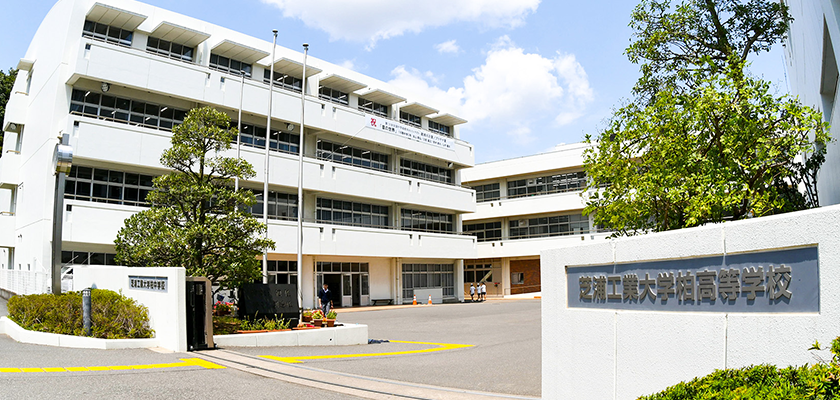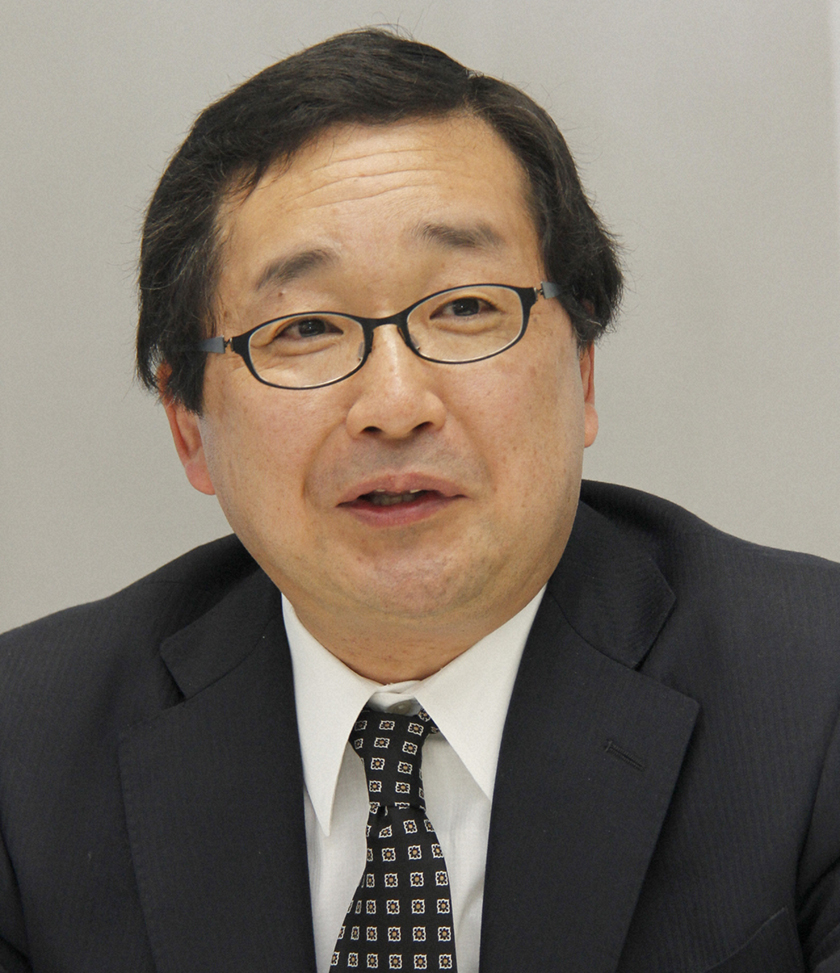Shibaura Institute of Technology Kashiwa Junior and Senior High School
The six years that develops academic skills as well as character qualities in accordance with the school’s motto, “Encouragement of creativity and promotion of individuality”


Principal NAKANE Masayoshi
Our school was founded in 1980 in Masuo, Kashiwa City, in order to provide a new type of high school education based on the tradition of the Shibaura Institute of Technology. We became a co-educational institution in 1990 and opened a junior high school in 1999, resulting in the currentcombined junior and senior high school.
In the spirit of our founding motto, "Develop Creativity and Display Originality," we have consistently succeeded as a college preparatory school, an achievement which continues to this day. Although the road to this moment has not been an easy one, our faculty and staff are united in their efforts to improve educational practices with an awareness of fulfilling our educational goals. This effort is reflected in the "Priority Goals for Educational Activities" that is published each fiscal year in the School Vision. This report includes the results of internal and external evaluations, which are explained in an easy-to-understand format, in addition to "Medium-Term Goals and Strategies" that look several years into the future.
Our school was accredited as a Super Science High School (SSH) from the Ministry of Education, Culture, Sports, Science and Technology for five years until 2008, and developed a new program for science experiment education at senior high schools. We were re-accredited as an SSH school in 2018 and continue to work with Shibaura Institute of Technology as an integrated school with a distinctive science and mathematics educational program. In recent years, we have expanded this program to project-based learning projects that are not limited to the liberal arts or sciences and have received high evaluations.
As a school with five junior high school classes and seven basic high school classes at each grade level, our homeroom teachers are familiar with all of the students in their classes, which allows for a close relationship between students and teachers. Our school is equipped with an advanced class management system that allows us to raise the overall academic level of students by continuing to make appropriate class adjustments even after enrollment.
Students are free to apply to any university without restriction, whether by recommendation or general entrance examination and the PTA supports students' career education needs with a " Job School" twice a year. Ever since its founding, we have employed a unique comprehensive learning approach that has been very helpful in enhancing both the personal and educational strengths of each student. While we have always maintained a relaxed atmosphere, at this important turning point in the world, our faculty and staff are united in their efforts to nurture students who will be both creatively minded and able to contribute to an increasingly globalized society.
About Shibaura Institute of Technology Kashiwa Junior & Senior High School
Education that provides a comprehensive background in the liberal arts and preparation for for success in entrance examinationsShibaura Institute of Technology Kashiwa Junior & Senior High School, while emphasizing higher education, aims to be a school that is loved by the local community, and to nurture healthy, well-rounded students who develop a broad perspective and cultural awareness through creative classes, in order to utilize the educational philosophy of "developing creativity and demonstrating individuality". By meticulously weaving together a variety of educational activities in and outside of the classroom, we are able to improve students' overall literacy skills and enhance their personalities and culture.
To ensure that students' self-learning and independent and collaborative efforts result in the retention and improvement of academic achievement, the school began operating its own SK Learning Rubric in fiscal 2017. Each grade level and subject meeting discusses how to effectively use the rubric, utilizing various "study methods" and "mechanisms to develop academic skills," and strives to cultivate the skills essential for future self-realization. This approach enables students to set their own goals, calmly assess their current situation, think of concrete measures to achieve their goals, and put them into action.
A curriculum that supports self-actualization
【A general framework for the six years of junior high and high school】The six years of junior and senior high school are divided into two-year periods, with the aim of realizing career paths in three stages: "Hop," "Step," and "Jump.
‘Hop’ Phase (1st and 2nd year of junior high school): Cultivate basic academic skills mainly in Japanese, mathematics, and English, acquire study habits and motivation, and establish a foundation of academic skills. In addition to the academic curriculum, there is a Green School for environmental science education, a cultural festival, and an athletic meet.
‘Step’ Phase (3rd year of junior high school and 1st year of high school): Students give concrete shape to their "dreams" in the form of goals. This is also the time when the students finish up the educational themes of "Environment, Information, and International" in various school activities and events. Extra-curricular activities include an overseas homestay program.
‘Jump’ Phase" (2nd and 3rd years of high school): Students are divided into liberal arts and science majors and are made to be seriously aware of the university entrance examinations that are the passing point for their goals. Especially in the third year of high school, students are required to study according to the subjects of their own entrance examinations under a unique curriculum. In addition to these subjects, there are trips to study abroad.
【The three-year high school system】
Students who enter the school from a junior high school and students who enter the school from a high school will be placed in different classes in their first year of high school because of the difference in progress in Japanese, mathematics, and English. High school students will make up the difference in progress by learning more Japanese, Mathematics, and English during 25-minute lessons each morning. In the second year, when students are divided into humanities and sciences, both groups are mixed, but some subjects are taught according to proficiency level to provide detailed guidance. In the third year, students are offered a small number of elective classes in small groups, which can also be in the form of an individual course system for each student, in order to help them achieve their career goals.